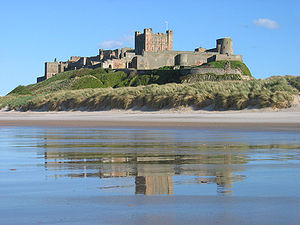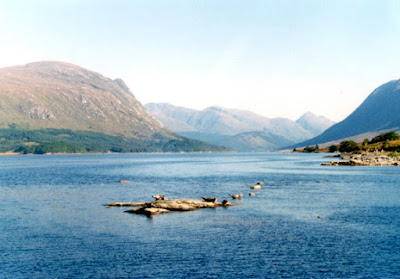
The graceful late 18th century Carolside Bridge spanning the Leader Water at Earlston links the neighbouring estates of Carolside and Leadervale. *

"The Statistical Account of Scotland" of 1834 gives us a beautiful description of Carolside
"Poised on a green plateau beside the River Leader and sheltered by surrounding slopes of its own extensive woodlands, as a sweet and secure asylum from the toils and troubles of the world'."

A view of the Leader valley, looking down on the little Carolside Bridge on the left of the photograph.

Coldstream Bridge over the River Tweed was opened in 1767 and marks the boundary between Scotland and England - and is still the main route south today.

In the meantime, however, many English couples in particular, eloped to places just across the Border, to escape the stricter English marriage laws and obtain a quick, easy and cheaper marriage.
It was on the bridge that Scottish bard Robert Burns had his first glimpse of England, as marked by a plaque.


The Toll House, where the payment had to be made, was the scene of a riot in 1854, when local people objected to continuing to pay the tolls when the building costs had been long cleared. It still took three years for tolls to be withdrawn. For nearly 200 years, this narrow bridge remained the only bridge across the Tweed at Kelso, causing many a bottleneck, until the building of a new one in 1998 to the east of the town.
The Chain Bridge at Melrose beneath the Eildon Hills crosses the famous salmon river of the Tweed. It was opened in 1826 as a footbridge.

Conditions were imposed on its use including the restraint that no more than eight people should be on it at any one time and "no loitering, climbing or intentional swinging" permitted. Contravention of the rules was punishable by a £2 fine (£135 in today's money) - or imprisonment. (Currency Converter)
Since
payment had to be made to cross the bridge, a ford downstream for horse
drawn vehicles continued to be used by pedestrians for some time, with a box of stilts at each end of the ford for people to use for a safer journey,
Mertoun Bridge, near St. Boswells was built c.1840, replacing an earlier partly wooden construction. It was later replaced in 1886 with he 5 arch sandstone bridge we see today.

* With thanks to the Auld Earlston Group for the use of these two photographs.
****************









 M
M





































